454. Once again. Supposing these koti
glyphs in the C text depicted broken egg shells, what interpretations
(if any) should then follow?
 |
128 |
 |
44 |
|
Ca3-12
(63) |
Ca7-24
(192) |
|
348
/ 2
=
174
= 6
* 29 |
 |
155 |
zero |
|
Ca9-9
(237) |
|
314
/ 2
=
157 |
|
120 |
 |
15 |
 |
199 |
 |
11 |
zero |
62 |
|
Cb6-6
(63
+
450) |
Cb6-22
(63
+
466) |
Cb14-8
(63
+
666) |
|
272
/ 2
=
136 |
400
/ 2
=
200
=
336
-
136 |
150
/ 2
= 75 |
The C tablet
was named
Mamari
(but Metoro
never used
this word in
his readings
for the
Bishop).
Mamari. Egg,
fish roe. mâmari ata rauhau, last small egg laid
by a hen before she turns broody. Vanaga. Egg (of fowl
or fish), (gamamari), (Cf. komari.);
mamari punua, chicken in the shell. Churchill.
The Mayas used a sea-shell to denote
zero, and since they lived north of the equator people
south of the equator ought to denote zero with a
chicken.shell, I think.

What is inside is not seen, not yet
perceived, not yet known - like the future:
...
For the
Maori the past is an important and pervasive dimension
of the present and future. Often referred to as the
'ever-present now', Maori social reality is perceived as
though looking back in time from the past to the present.
The
Maori word for 'the front of' is mua and this is
used as a term to describe the past, that is, Nga wa
o mua or the time in front of us. Likewise, the word
for the back is muri which is a term that is used
for the future. Thus the past is in front of us, it is
known; the future is behind us, unknown. The point of
this is that our ancestors always had their backs to the
future with their eyes firmly on the past. Our past is
not conceived as something long ago and done with, known
only as an historical fact with no contemporary
relevance or meaning. In the words of a respected Maori
elder: The present is a combination of the ancestors and
'their living faces' or genetic inheritors, that is the
present generations. Our past is as much the face of our
present and future. They live in us ... we live in them
...
|
... The system of notation in the
Bakhshali arithmetic [used in the
Bakhshali manuscript written perhaps
in the ninth century, but with contents
composed 'no later than the fourth
century AD'] is much the same as that
employed in the arithmetical works of
Brahmagupta and Bhaskara. There
is, however, a very important exception.
The sign for the negative quantity is a
cross (+). It looks exactly like our
modern sign for the positive quantity,
but is placed after the number which it
qualifies. Thus
12 7 +
1 1
means 12 - 7 (i.e. 5). This is a sign
which I have not met with in any other
Indian arithmetic; nor, so far as I have
been able to ascertain, is it now known
in India at all. The sign now used is a
dot placed over the number to which it
refers. Here, therefore, there appears
to be a mark of great antiquity.
The following statement, from the first
example of the twenty-fifth sutra,
affords a good example of the system of
notation employed in the Bakhshali
arithmetic:
l
1 1 1
1 1
1 1 bha 32
phalam 108
3+
3+ 3+
Here the initial dot is very much in the
same way as we use the letter 'X' to
denote the unknown quantity the value of
which is sought. The number 1 under the
dot is the sign of the whole (in this
case, the unknown) number. A fraction is
denoted by placing one number under the
other without any line of separation;
thus
1
3
is 1/3, i.e. one-third. A mixed number
is shown by placing the three numbers
under one another; thus
1
1
3
is 1 + 1/3 or 1 1/3, i.e. one and
one-third. Hence
1
1
3+
means 1 - 1/3 (i.e. 2/3).
Multiplication is usually indicated by
placing the numbers side by side; thus
5 32
8 1 phalam
20
means 5/8 * 32 = 20. Similarly
1 1
1
1 1
1
3+
3+ 3+
means 2/3 * 2/3 * 2/3 or (2/3)3,
i.e. 8/27.
Bha
is an abbreviation of bhaga,
'part', and means that the number
preceeding it is to be treated as a
denominator. Hence
1
1 1
1
1 1 bha
3+
3+ 3+
means 1 : 8/27 or 27/8. The whole
statement, therefore, means 27/8 * 32 =
108,
l
1 1 1
1 1
1 1 bha 32
phalam 108
3+
3+ 3+
and may be thus explained - 'a certain
number is found by dividing with 8/27
and multiplying with 32; that number is
108' ...
... The dot is also used for another
purpose, namely as one of the ten
fundamental figures of the decimal
system of notation, or the zero (0 1 2 3
4 5 6 7 8 9). It is still so used in
India for both purposes, to indicate the
unknown quantity as well as the nought.
With us the dot, or rather its
substitute the circle (0), has only
retained the latter of its two intents,
being simply the zero figure, or 'the
mark of position' in the decimal system.
The Indian usage, however, seems to show
how the zero arose, and that it arose in
India. The Indian dot, unlike our modern
zero, is not properly a numerical figure
at all. It is simply a sign to indicate
an empty place or a hiatus. This is
clearly shown by its name sunya
'empty' ...
The above is quoted from
Midonick and I have redmarked the final
relevant part. But we should also notice
how the counting example connects 108,
32, and 8 (numbers of importance in
rongorongo)
... |
Let's now count in the C text:
|
742 |
|
174 |
157 |
136 |
200 |
75 |
|
348 |
314 |
272 |
400 |
150 |
|
522 |
471 |
408 |
600 |
225 |
|
2226 = 1½ * 1484 |
2226 days = 318 weeks = 42 * 53. Here we
can read 42 as a reference to the Underworld:
... The four bereaved and searching
divinities, the two mothers and their two sons, were
joined by a fifth, the moon-god Thoth (who appears
sometimes in the form of an ibis-headed scribe, at other
times in the form of a baboon), and together they found
all of Osiris save his genital member, which had been
swallowed by a fish. They tightly swathed the broken
body in linen bandages, and when they performed over it
the rites that thereafter were to be continued in Egypt
in the ceremonial burial of kings, Isis fanned the
corpse with her wings and Osiris revived, to become the
ruler of the dead. He now sits majestically in the
underworld, in the Hall of the Two Truths, assisted by
forty-two assessors, one from each of the principal
districts of Egypt; and there he judges the souls of the
dead. These confess before him, and when their hearts
have been weighed in a balance against a feather,
receive, according to their lives, the reward of virtue
and the punishment of sin ...

And 53 makes sense if we should count number of days
from January 1 when we will arrive at February 22 (→
222). According to Wilkinson the Egyptian glyph sesch
(G48, bird nest) was used as a determinative and also as
an ideogram for tau (chicken):
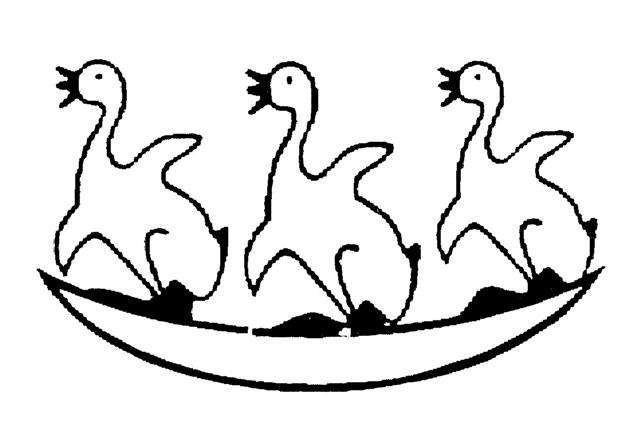
|
Egyptian sticks |
 |
Phoenician
taw |
 |
Greek chi |
Χ (χ) |
|
Greek tau |
Τ (τ) |
|
In Plato's
Timaeus, it is explained that the two
bands that form the soul of the world cross
each other like the letter Χ.

Roman XII = 12 → XIII = 13, with the Nose in
between - and later, after the Mouth, the
cycle would begin anew (I).
Chi or X is
often used to abbreviate the name Christ, as
in the holiday Christmas (Xmas). When fused
within a single typespace with the Greek
letter Rho, it is called the labarum and
used to represent the person of Jesus
Christ. (Wikipedia)

... tau
is the 19th letter of the Greek alphabet. In
the system of Greek numerals it has a value
of 300 ... Taw is believed to be
derived from the Egyptian hieroglyph meaning
'mark' ...
Taw,
Tav or Taf is the
twenty-second and last letter in many
Semitic abjads ... In gematria Tav
represents the number 400, the largest
single number that can be represented
without using the Sophit forms ...
'From
Aleph to Taf' describes something
from beginning to end; the Hebrew equivalent
of the English 'From A to Z' ...
Tav is
the last letter of the Hebrew word emet,
which means truth. The midrash explains that
emet is made up of the first, middle,
and last letters of the Hebrew alphabet (Aleph,
Mem, and Tav...).
Sheqer (falsehood), on the other
hand, is made up of the 19th, 20th, and 21st
(and penultimate) letters.
Thus, truth
is all-encompassing, while falsehood is
narrow and deceiving. In Jewish mythology it
was the word emet that was carved
into the head of the Golem which
ultimately gave it life. But when the letter
'aleph' was erased from the Golem's
forehead, what was left was 'met' -
dead. And so the Golem died ...
(Wikipedia)
 |
For in the pre-Roman calendar the
last day in the regular year, Terminalia, was number 53
counted from the last day of December. 1
(December) + 29 (January) +
23 (February) = 53 (Terminalia):
|
December |
29 |
31 |
+2 |
|
Ianuarius |
29 |
31 |
+2 |
|
Februarius |
28 |
28 |
- |
... The leap day was introduced as part
of the Julian reform. The day following the Terminalia
(February 23) was doubled, forming the 'bis sextum
- literally 'double sixth', since February 24 was 'the
sixth day before the Kalends of March' using Roman
inclusive counting (March 1 was the 'first day').
Although exceptions exist, the first day of the bis
sextum (February 24) was usually regarded as the
intercalated or 'bissextile' day since the third
century. February 29 came to be regarded as the leap day
when the Roman system of numbering days was replaced by
sequential numbering in the late Middle Ages ...
53 can also be understood as one more
week than 52 (= 364 / 7), and 53 weeks = 371 days =
300 + 71 = 300 + 26000 (precessional year) / 364
(days around the Sun).
 |
 |
 |
|
Ca3-1 |
Ca3-2 (53) |
Ca3-3 |
|
kiore - henua |
tapamea |
tagata rere ki te toki -
te hau tea |
|
CLOSE TO
THE FULL MOON: |
|
May 12
no star listed (52) |
13 (133 = 80 + 53)
ψ Persei (53.1)
ACRUX (α CRUCIS)
|
14
δ Persei (54.7) |
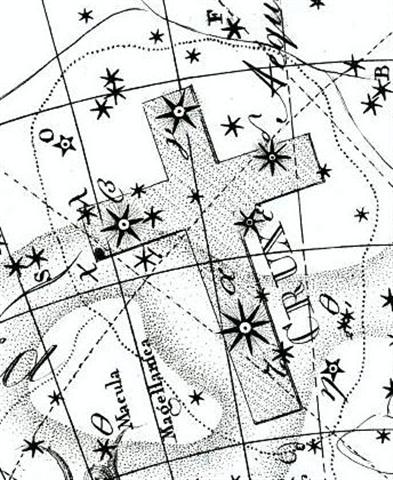 |
 |
 |
 |
 |
 |
|
Ca3-4 |
Ca3-5 |
Ca3-6 |
Ca3-7 |
Ca3-8 (59 = 2 * 29½) |
|
kiore ki te henua |
ihe tapamea |
e tagata mau toki ki te
henua |
e hokohuki mau ki te
matagi |
kiore i te henua |
|
Tapa.
1. Side, corner,
edge; he-hakarere a te tapa, to leave
aside, to abandon; a te tapa mata'u o te
haga, on the right-hand side of the bay.
2. Tapa mahute, piece of mahute
material; this term is very common nowadays,
but it seems probable that it was borrowed
from the Tahitian in replacement of
parehe mahute. 3. To recount the
years, the months; to recount happenings of
many years ago, in verses called manu,
in which a murderer confided his crime
to his victim's relatives; the murderer
himself asked a brother or a friend to
compose those verses: e tapa koe itooku
manu, compose my manu. The
expression tapa ite manu was also
used of a group of people expressing the
desire to kill someone. 4. Tagata tapa
ta'u, according to traditions, this term
referred to the scribes who recorded births
on the tablets. Vanaga. 1. Border, fringe,
edge, groin, cloth, clothing, dress,
garment. Tatapa, lateral, bank.
Tapatapa, edge. P Mgv.: tapa, the
edge of the bast cloth, bast cloth in
general. Mq.: tapa, fringe, cloth. 2.
To name, to mention, to count, to calculate,
to reckon, to number, to figure up, to
recapitulate; tapa ki te igoa, to
take a census; tapa igoa, list.
Tatapa, to count, to number, to reckon.
Tapatapa, to mention. P Mgv.: tapa,
to give a pet name. Mq.: tapatapa, to
recite, to invoke; tatapa, to take
the name of some one, to announce by name.
Ta.: tapa, to call by name.
Churchill.Mq.: Tapaau, coconut leaf
plaited to serve as a mat. Sa: tapa'au,
a coarse coconut leaf mat. Tapatai, a
dweller on the strand. Ma.: tapatai,
beach. Churchill.
Kapa¹,
adj. Haw., rustling, rattling;
s.
cloth made of bark, cloth of any kind. Sam.:
tapa,
to beckon with the hand, to demand; s. the
white border of a siapo;
tapa-au,
mat made of cocoa-nut leaf. Tong.,
tapa,
id.;
kapa-kapa, to flap with a noise
as wings of birds. Marqu.,
tapa,
bark cloth. Tah.,
tapa-ie,
envelop in leaves;
apa,
the lining of a garment;
apa-a,
thick cloth made by men, not by the women; 'apa'apa,
to flap as sail or the wings of a bird.
Fiji., kava,
a roll of sinnet;
kaba,
to climb. Motu (N. Guinea),
kava,
bark girdle for men. Biaju,
tepoh,
a mat. Salayer (Celebes),
tupur,
id. Malag.,
komba, a monkey. Kawi,
kapala,
a horse. Sanskr.,
kamp,
to move to and fro, to tremble;
chapala
('i.e., kampa-ala',
Benfey), trembling, unsteady, giddy;
châpala,
quickness;
kapi ('i.e.,
kamp-i',
Benfey), a monkey. Perhaps
kambala,
a wollen blanket. Greek,
καμπη,
bending, winding, as a river, turn, trick,
sudden change.
A.
Pictet (Orig. Ind.-Eur., i. 347-348) derives
the Greek καβαλλης, a nag, and other
kindred West Aryan forms for horse and its
varieties, as well as καπρος, a wild
boar, and caper, a buck, from the
Kawi or obselete Sanskrit application of the
original sense, 'to tremble, rustle, flap',
found in the Sanskrit kap, kamp,
and the Polynesian kapa, tapa.
Kapa², s. Haw., a bank, shore,
side, as of a river, lake, wood, or the
like. Rarot., tapa, id. Tah.,
apa'apa, one side of a thing when
divided, the side of a house. Sam., tafa,
the side of a hill; v. to turn on one
side; tafa-fa, four-sided;
tafatafa, the side; tafa-tasi,
one-sided; tafa-to, perpendicular,
steep as seen from above; tafa-tu,
id., as seen from below. Marqu., tapa-hai,
coral; kapa-i, on the side of the
sea. Fiji., taba, wing, shoulder,
branch, one side. Malg., taf, tafo,
the roof of a house; tambon, above.
Welsh, tab, tav, an extended
surface, a spread; tob, top,
top, crest; cop, summit. Irish,
capat, head. Armor., kab, id.
Lat., tabula, board, plank, table;
caput, head. Sanskr., kapala,
skull, head, either half of an egg;
kapola, cheek, the temples of the head.
Pers., kabah, elevation, eminence;
tabrak, tabûk, table, flat.
Greek, κεφαλη, head, top, upper end.
Goth., haubith, head. Sax., heafod,
id.; hafala, hafula, head,
casque. Anc. Germ., haupit, head;
hufela, the temples. Germ., kopf,
head. A. Pictet (loc. cit., ii. 273)
refers the Persian tabrak and the
Latin tabula to Sanskrit sthâ,
or perhaps stabh, tabula, for
stabula, and (i. 308) he says,
speaking of the Sanskrit kapala, and
its West Aryan relations: - 'J'y trouve un
composé de pâla, protecteur, avec
l'interrogatif ka, dans le sense
laudatif. Quel (bon) protecteur! on ne
saurait mieux caractériser le rôle naturel
du crâne. Or kapât et kapâ ou
kapa auraient la même signification;
car pât, pâ, pa, à la
fin des composés, sont synonymes de pâla,
et dérivent également de la racine pâ,
tueri.'
Under
correction, the 'quel bon protecteur' of Mr.
Pictet appears to me a singular and fatal
misnomer of the most prominent and most
exposed part of the body. The original
meaning of the Polynesian word was probably
something raised, spread out, obtruding,
projecting, beyond or above the common level
of things. Hence such compound words in the
Polynesian as kapa-au, Haw., the
raised place of the Heiau (temple), where
the image of the god stood and offerings
were laid; 'apa-'au, Sam., a wing;
'apa-'apa, the fin of a fish; apa-ta,
to clap the wings. The West Aryan forms:
Lat., cap-ut, cap-pilus (capillus);
the Irish cap-at, alongside of
ceap and cap; the double forms in
the Goth. and Sax., hau-ith,
heaf-od, and hafa-la, hofu-la,
seem to indicate a different composition and
root for themselves, as well as the Sanskrit
and Greek, than what Mr. Pictet offers. And
the probably primary sense of 'elevation,
eminence', in the root-word has survived in
the Persian kabah, the Armorian
kab, the Welsh tob or top.
Fornander. |
|
CLOSE TO
THE FULL MOON: |
|
May 15 (365 + 135 = 500)
Al Thurayya-27 (Many Little Ones) /
Krittikā-3 (Nurses of Kārttikeya) /
TAU-ONO (Six Stones)
ATIKS =
ο Persei,
RANA (Frog) =
δ
Eridani
(55.1),
CELAENO (16 Tauri), ELECTRA (17), TAYGETA
(19),
ν
Persei (55.3),
MAIA (20), ASTEROPE (21), MEROPE (23)
(55.6) |
16 (136)
Hairy Head-18 (Cockerel) /
Temennu-3 (Foundation Stone)
ALCYONE
(56.1),
PLEIONE (28 Tauri), ATLAS (27 Tauri)
(56.3) |
17
MENKHIB (Next to the Pleiades =
ζ
Persei
(57.6)
PORRIMA (γ Virginis) |
18
ZAURAK (The Boat) = γ Eridani
(58.9) |
19
λ Tauri (59.3), ν Tauri (59.9) |
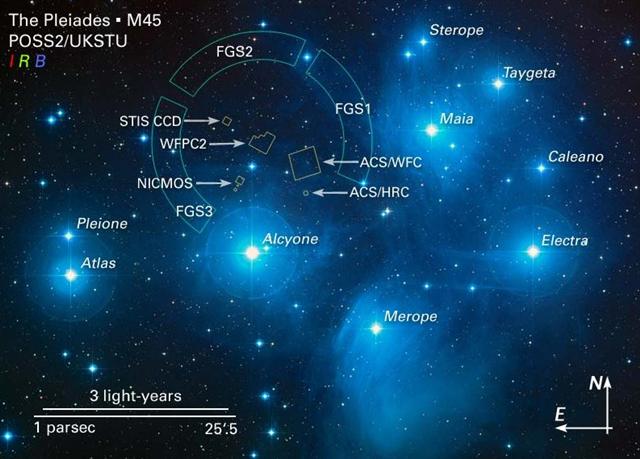 |
|
JAN 19 |
20 |
21 (101 - 80) |
22 → Mercury |
|
MARCH 17 (76 = 140 - 64) |
18 |
19 |
20 (79 = 22 + 3 * 19) |
 |
 |
 |
 |
|
Ca3-9 |
Ca3-10 |
Ca3-11 |
Ca3-12 (63 = 7 * 9) |
|
tapamea tagata kua iri |
ki te pa |
kua hua |
ki te kotiga |
|
Hua.
1. Testicle.
2. Figuratively: son, hua tahi,
only son; fruits of the earth; to grow
well (of fruits). 3. To cause a fight, a
quarrel. Hua-ai, generation, as
lineage of direct descendents;
contemporaries. Huahua, coccyx of bird, 'parson's nose':
huahua moa, huahua uha.
Huataru, a creeper (Chenopodium
ambiguum). Vanaga. 1. The same;
ki hua, again, to continue, to
strain, to struggle, to move, to repeat,
over and above. Mq.: hua, the
same, to return, to recommence. 2. To
bloom, to sprout; flower, fruit (huaa);
huaa tae oko, huaa vahio,
young fruit; hua atahi, only son;
huahaga, fruit; mei te huahaga
o tokoe kopu, the fruit of thy body;
tikea huahaga, deceptive
appearance. P Pau.: ua, to be
born; huahaga, lineage. Mgv.:
hua, to produce (said of trees,
grain, etc.), blooming time of flowers,
abundance of fruit. Mq.: hua, to
produce, to bear fruit. Ta.: ua,
to sprout. Huahua. 1. Tailless
fowl. 2. Vein, tendon, line. 3. Mgv.:
huahua, pimples covering the face.
Ta.: huahua, id. Mq.: hua,
tubercules. Sa.: fuafua, abscess
on hand or feet. Ma.: huahua,
small pimples. Pau.: Hua-gakau,
rupture. Ta.: áau, entrails. Sa.:
ga'au, id. Ma.: ngakau,
id. Churchill. 1. Fruit. 2. Egg. 3. Tā
hua = 'genealogical writing' or
'same writing'. Fischer. |
|
CLOSE TO THE FULL MOON: |
|
May 20 (140)
4h (60.9)
JĪSHUĬ (Piled-up Waters) =
λ
Persei
(60.7)
COR CAROLI
(α Canum Ven.)
|
21
υ Persei (61.2) |
22 (21 + 121 = 142)
BEID (Egg) =
ο¹
Eridani
(62.2),
μ
Persei (62.8)
VINDEMIATRIX ( ε Virginis) |
23 (11 * 13 = 143)
Al Dabarān-2 (The Follower)
HYADUM I = γ Tauri
(63.4)
*22 = *63.4 - *41.4 |
|
'April 23 (*60 - * 27 = *33) |
24 |
25 (115 →
Mercury → Hermes Trismegistos) |
26 |
|
... [E:17] On the twenty-fifth day of
the first month (Vaitu Nui),
Ira and Makoi set sail; on
the first day of June ('Maro'),
the bow of Ira's canoe appeared
on the distant horizon, came closer and
closer on its course, and sailed along,
and finally (one) could see the (new
home) land ... |
|
"April 9 (140 - 41 = 99) |
10 (100) |
11 (*21) |
12 |
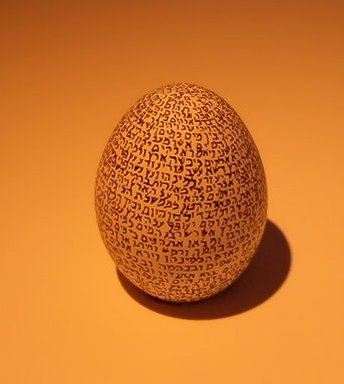 |
|
CLOSE TO THE SUN: |
|
Nov 19 (140 + 183 = 323)
16h (243.5)
ACRAB (Scorpion) = β Scorpii, JABHAT AL
ACRAB (Forehead of the Scorpion) = ω
Scorpii
(243.3), θ Lupi,
RUTILICUS = β Herculis
(243.5),
MARFIK (Elbow) = κ Herculis
(243.7), φ Herculis (243.8)
|
20
ψ
Scorpii (244.6),
LESATH (Sting) =
ν
Scorpii
(244.8) |
21 (*245)
χ
Scorpii (245.1),
YED PRIOR (Hand in Front) =
δ
Ophiuchi,
δ
Tr.
Austr. (245.5) |
22
YED POSTERIOR (Hand Behind) =
ε
Ophiuchi,
RUKBALGETHI SHEMALI (Northern Knee of
the Giant) =
τ
Herculis
(246.6).
δ
Apodis (246.7),
ο
Scorpii (246.8) |
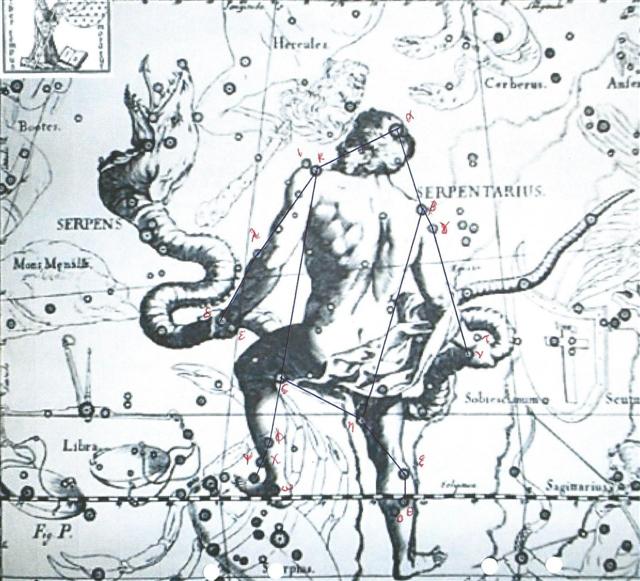 |
When the Sun reached the left hand of
Ophiuchus, then the Full Moon was half a year away at
the Egg (Beid, ο,
hua) down in the Eridanus River.
"That there is a whirlpool in the sky is
well known, it is most probably the essential one, and
it is precisely located. It is a group of stars so named
(zalos) at the foot of Orion, close to Rigel
(beta Orionis, Rigel being the Arabic word for 'foot'),
the degree of which was called 'death', according to
Hermes Trismegistos, whereas the Maori claim outright
that Rigel marked the way to Hades (Castor indicating
the primordial homeland)." (Hamlet's Mill.)
|

















